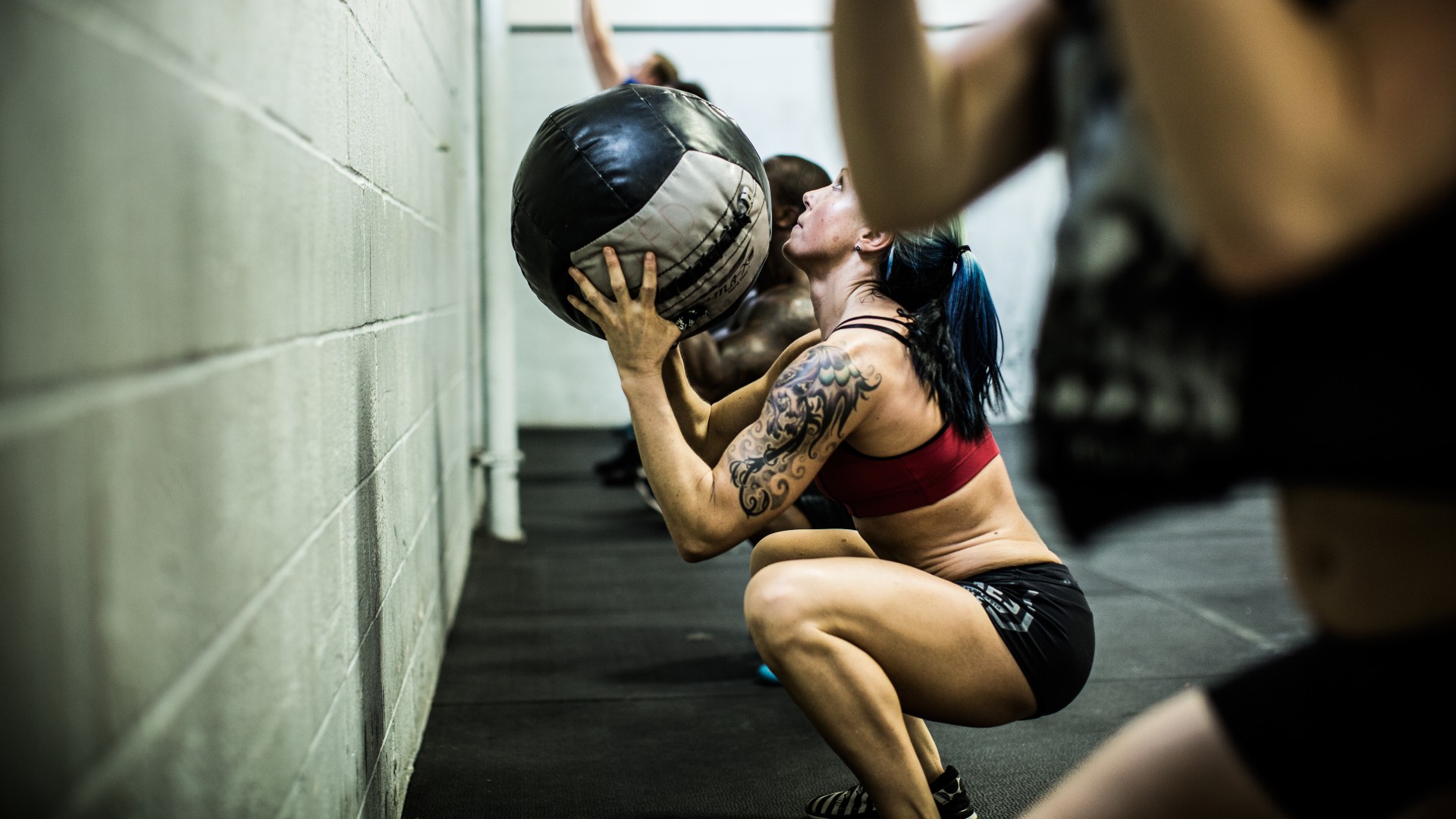
CrossFit athlete and Fittest Man in the UK, Harry Lightfoot, shares a 30-minute full-body conditioning workout exclusively with Tom’s Guide.
The EMOM (Every Minute on the Minute) is a high-intensity, full-body conditioning session comprising nine movements. It mixes cardio, strength and endurance training to boost overall fitness and target every major muscle group, helping you build and strengthen with your efforts in the gym.
You’ll need some of the best home gym equipment or access to your local gym spot. We’re obsessed with this full-body beasting — and here it is. Get ready to send it.
What is the 9-move EMOM conditioning workout?
The 30-minute workout is accessible for beginners and advanced athletes, but you might consider scaling exercises where needed by reducing the calorie or rep target. RX numbers for this workout are included below as written by Lightfoot and are men's and women’s respectively, but adjust as necessary to ensure you finish.
If you only have one calorie machine, stick with it throughout the workout. Lunges, push-ups and burpees can be performed using your body weight, but you’ll need a step or box for the jump-overs, a medicine ball for wall balls and a pull-up bar.
Fancy training like the Fittest Man in the UK? Now you can. Here’s how.
- 30-minute EMOM (repeat 3 times)
- Minute 1: 20/15 calorie row
- Minute 2: 20 lunges
- Minute 3: 15 push-ups
- Minute 4: 20/15 calorie ski erg
- Minute 5: 20 wall balls
- Minute 6: 15 burpee to target
- Minute 7: 20/15 C2 bike
- Minute 8: 15 box jump-overs
- Minute 9: 15 pull-ups
- Minute 10: Rest
Warm-up: 10-15 minutes
Start with a 60-second effort on each machine (row, ski, bike) at an easy pace, or 3 minutes on a machine of choice if you have limited kit. Then, Lightfoot recommends moving through dynamic stretches and bodyweight movements like the World’s Greatest Stretch, scorpions, inchworms, lunges and air squats.
Next, move through the exercises in the program. “Warm up each movement progressively,” says Lightfoot. “Perform some squats with the medicine ball before going into a full wall ball, then step-overs, box jump-overs and warm-up pull-ups, progressively.” We cover the exercises in more detail below.
1. Rowing

“Complete a number of calories you can finish in 50 seconds throughout the workout,” says Lightfoot. “The 15 & 20 are guideline numbers for females and males.”
- Sit on the rower, strap your feet in and grip the handle
- Push with your legs, lean back slightly and pull the handle toward your stomach
- Reverse the motion to return to the starting position.
2. Push-ups
Here’s how to do a push-up in more detail.
“Scale the number or movement to something you can perform in no more than 3 sets,” Lightfoot advises. “Scaling options include kneeling or using a raised surface such as a bench or box.”
- Start in a plank position with your hands under your shoulders
- Lower your body until your chest nearly touches the ground, pause, then push upward to the starting position.
3. Lunges
“Keep these as bodyweight or add dumbbells in a farmer’s carry position by your side,” says Lightfoot. “These must be performed unbroken each round.” We recommend choosing reps that allow you to maintain this across every round.
Here’s how to do lunges with proper form. We recommend reverse lunges as demonstrated in the video above if you have problems with your knees that prevent you from front-loading.
- Stand tall, step forward with one leg and lower your hips until both knees are at 90-degree angles
- Push upward to the starting position
- Switch legs.
4. Ski erg

Here’s more on how to use the ski erg properly.
- Stand with feet shoulder-width apart
- Grab the handles and pull down forcefully while bending your knees slightly and hinging at your hips
- Stand up tall and return the handles toward the starting position
- Repeat for calories.
5. Wall balls


“Use a weight you can perform each set unbroken,” advises Lightfoot. “9kg and 6kg are guidelines for men and women.”
Here’s how to do wall balls in more detail.
- Stand facing a wall or rig target with the ball held in front of your face
- Squat low, then explode upward and throw the ball to the target above you
- Catch the ball as you lower into the next squat
- Repeat.
6. Burpee to target
Scale the reps if you can’t perform 15 in 50 seconds. Here’s how to do a burpee with proper form.
- Stand under a pull-up bar approximately 6 inches from your hand when reaching your arm vertically above you
- Place your hands on the floor and jump your feet back into a plank
- Lower your body to the ground, including your chest
- Jump or step your feet back up to standing
- As you jump up, tap the pull-up bar with both hands
7. C2 bike

Sit on the bike, grip the handles and pedal with as much power as possible. Again, aim to finish within 50 seconds and scale calories accordingly.
8. Box jump-overs

If you can’t jump, step-overs are allowed instead. Here’s how to do a box jump in more detail.
- Stand facing the box with feet shoulder-width apart
- Jump onto the box with both feet. Ensure both feet land simultaneously
- Immediately jump off to the other side, landing with both feet together
- Repeat in the opposite direction and remember that one-footed jumping isn’t permitted.
9. Pull-ups

“In a CrossFit workout, these are performed as kipping or butterfly pull-ups,” explains Lightfoot. “If you haven’t been taught these or cannot yet perform them, scale to jumping pull-ups or ring rows.”
We also recommend looping a resistance band over your pull-up bar and stepping a knee or foot through for extra support. Choose any option you’ve already been working with instead. We cover pull-ups vs chin-ups to help you tighten up your technique and learn how hand grips matter during exercise.
10. Rest
Rest for 60 seconds, then repeat the EMOM for another 2 rounds, totaling 30 minutes.
Remember, the whole point of an EMOM is to finish a given number of reps or calories within the minute, leaving roughly 10 seconds to transition to the next exercise.
A time limit keeps you accountable and helps you monitor your ability to be consistent, so try not to gas out early by overestimating what you can do. If anything, use the first round as a measure, then replicate it across the remaining rounds.







